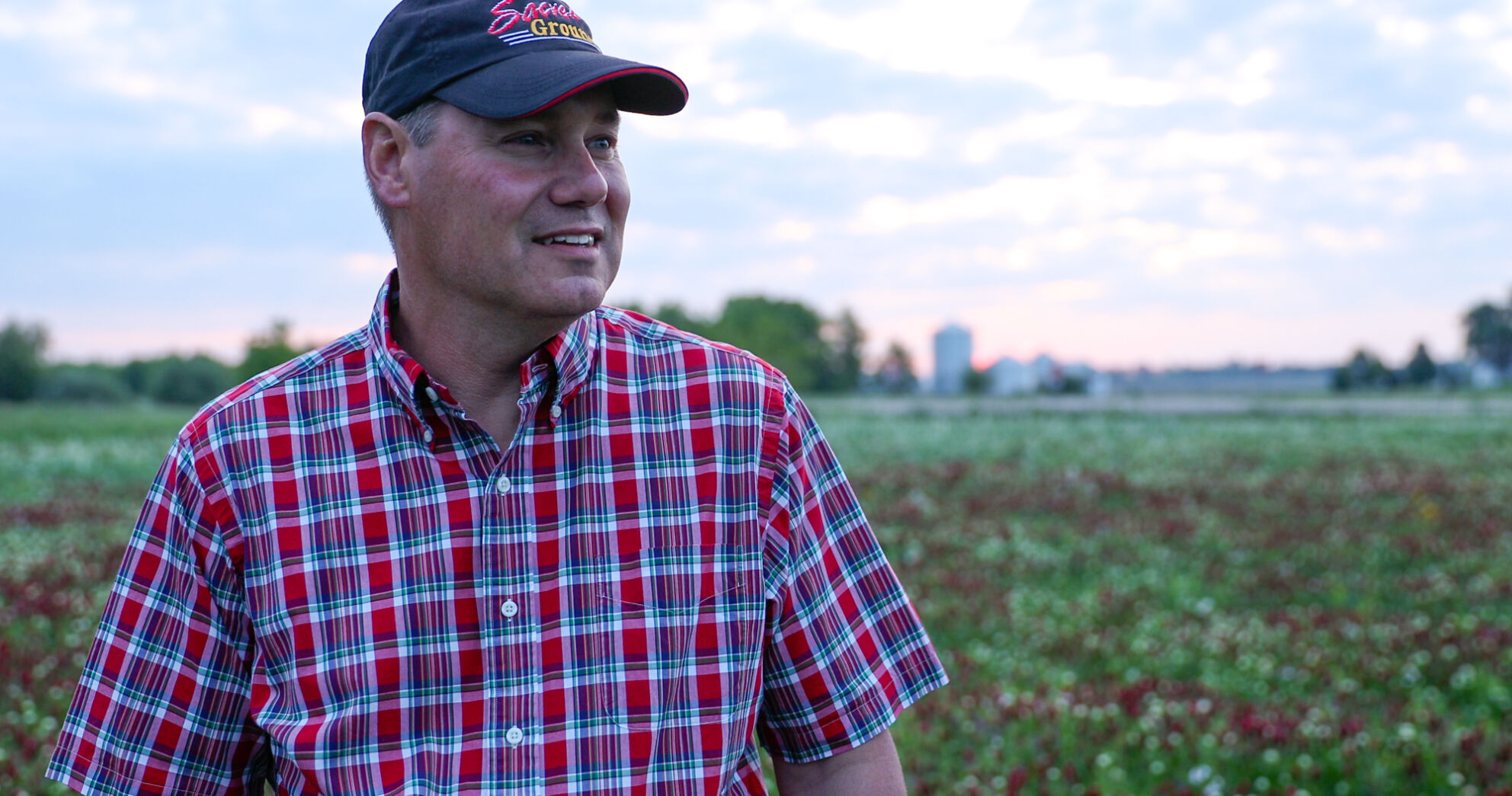Regardless of your approach to raising crops, Indiana farmer Rick Clark believes that each producer has to find his way to be profitable.
Clark, from Williamsport, which is near the Illinois border, farms about 7,000 acres and as a fifth-generation farmer is committed to a non-genetically modified organism operation that includes no-till and cover crops.
“You don’t realize how much chemistry does for you until you take it away,” Clark said. “In the past when we still used chemistry I probably wasn’t just crazy about everything having to be just perfect because that chemistry pass is going to come and it will clean up whatever problem we have. We don’t have that chemistry pass any more.”
Regardless of approach, each year has unique challenges, he said. Earlier this year the weather has been wet and cool and in that region of the country makes it difficult on cover crops, Clark said. Biomass has been reduced, too.
Primarily what he did to combat Mother Nature’s curve ball was to add soybeans acres, which he planted using 7 1/2-inch row spacing with a population of about 230,000 to 240,000 plants per acre as a way to add to the cash crop and to suppress the weeds.
His increase in soybean planting rate he hopes will help but adds that once a weed gets started it is difficult to control and he has taken it to a higher level.
Clark uses a weed zapper with a copper bar that pulls a generator unit behind the tractor and creates 10,000 volts of electricity. As the bar strikes the weed the process causes the cells in the weed plant to explode. He says when a waterhemp plant gets hit, within 5 to 10 seconds it drops over and he has a similar approach on other broadleaf plants.
The copper bar is used while the weed plant is taller than the soybean plant, he said. However, he does not want to over rely on it.
Health conscious
Clark wants his farm practice to be soil health and human health conscious. In his case he does not want to be exposed to caustic chemicals that can impact his health, his children and their children’s health.
He uses an organic approach with cover crops in his no-tillage operation. “We are not out here doing mass destruction to the soil. We are trying to save the soil and do it with as little inputs as possible. Right now the only input we are using is a cover crop ‘cocktail’ and the seed itself.”
The organic farming is in its fifth year and he considers his regenerative process in its 12th year. He believes that while regenerative farming can improve soil health he also recognizes the need for success. His main goal is to build soil health and achieve balance with Mother Nature. His approach has been a systematic approach with a suite of conservation practices including planting cash crops directly into cover crops, no-till practices, rotational grazing livestock and reducing inputs and energy use on his operation.
Return on investment
Clark’s definition of success is not solely based on yield, which can be comparable, but instead on return on investment. He maintains his ROI is higher because of a reduced input load up front. Also he has production years where he has actually exceeded yield expectations.
“Too many times a farmer’s success is based on yields and that is a crying shame because that is not what this is all about. It is not about maximizing yields. It’s about maximizing the return on your investment.”
Each acre needs to be maximized with a cost basis, he said.
Information for this story was from the Soil Solutions podcast with Jessica Gnad, the executive director of Great Plains Regeneration and soil health content consultant for High Plains Journal. Visit soilhealthu.net/podcasts to hear the podcasts. Sign up to receive the monthly Soil Health HPJ Direct newsletter and Soil Solutions podcast notifications by visiting hpj.com/signup and checking Soil Health.
Dave Bergmeier can be reached at 620-227-1822 or dbergmeier.
Sign up for HPJ Insights
Our weekly newsletter delivers the latest news straight to your inbox including breaking news, our exclusive columns and much more.




